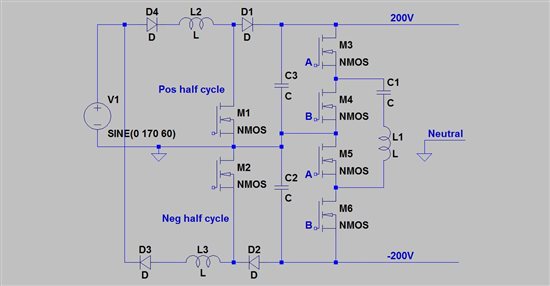Hi everyone,
Im currently looking at providing PFC for a split rail +200/-200 power supply (maybe higher). Neutral is my common, and the +/- component of active(hot) is rectified to each of the required split rails. My output will not be isolated.
Can I use a single PFC controller in such an application? Or do I need two controllers - one for the positive component and one for the negative. I have noticed most controllers sit across the single rectified mains output - making their common negative going in relation to neutral and correcting only a single output (usually positive).
I may need to go as high as 3.6KW, so have been looking at the UCC28019A. Any suggestions on a topology for this problem? or controller? hopefully I have missed something.
Thanks,
Steve


